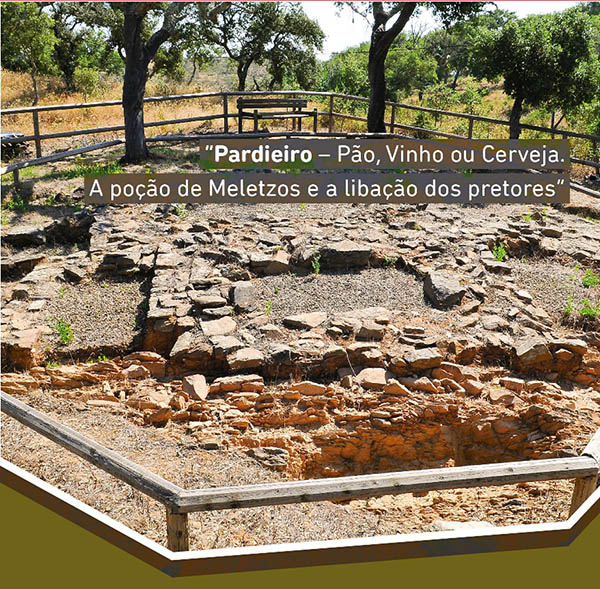 A visit to the Archaeological Monument of the Pardieiro Necropolis, in the interior of the municipality of Odemira, is scheduled for the afternoon of Saturday, 6 May. With the theme “Pardieiro – Bread, Wine or Beer. The potion of Meletzos and the libation of praetors”, the activity will be promoted by archaeologist Jorge Vilhena, in an initiative of GESTO – Study Group of the Territory of Odemira and the Municipality of Odemira.
A visit to the Archaeological Monument of the Pardieiro Necropolis, in the interior of the municipality of Odemira, is scheduled for the afternoon of Saturday, 6 May. With the theme “Pardieiro – Bread, Wine or Beer. The potion of Meletzos and the libation of praetors”, the activity will be promoted by archaeologist Jorge Vilhena, in an initiative of GESTO – Study Group of the Territory of Odemira and the Municipality of Odemira.
The Necropolis of Pardieiro is a funerary monument from the 1st Iron Age, approximately 2500 years ago (in other words, three centuries before the arrival of the Romans in this territory) and is located near the village of Corte Malhão, in the parish of S. Martinho of the Mulberries.
“The activity is intended to be an informative, playful, sensory and promotional visit on the archaeological monument and some traditional aspects of the territorial context in which it is located: the mountainous area in the interior of the municipality of Odemira”, stresses the Municipality of that municipality.
“The anthropological and gastronomic perspectives are added to archeology and history, with special emphasis on bread, wine and beer”, he adds.
The Municipality provides free transport from the parking lot of the “O Tarro” restaurant, in Odemira, at 14:30 pm.
A brief explanation of the architectural characteristics of the monument and the history of its discovery, investigation and restoration/enhancement will be presented, with an emphasis on the ancestral cultural and economic ways of living (in)the mountains.
The Pardieiro Necropolis was excavated in the 1989/90 and 2008/9 campaigns. The monument was restored (2001) and valued (2008) by the Municipality of Odemira.
Excavations have uncovered stone tombs and side burials carved into the rock, along with an important collection of finds.
Three stone tombstones were also collected, engraved with pre-Latin writing from the Peninsular Southwest – the Southwestern Writing, the oldest writing system in Western Europe, which remains to be completely deciphered.
Among the findings are roasted barley grains, a process that was intended to preserve the grain and/or produce malt for old beer (“cervoise”, a thick fermented liquid ancestor of today's beer), a drink much appreciated during the Age of Iron in Western Europe of “Celtic” culture.


















Comments